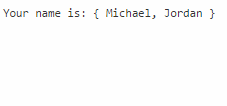Retrieve Current Row Index Of ASP.NET Web Forms GridView Control On RowCommand
Hi, To retrieve the current row index of a GridView control on RowCommand event, you have to access the NamingContainer property of a control which belongs to that GridViewRow. In the example below, I have a LinkButton control declared inside a TemplateField. ASPX Code <asp:TemplateField> <ItemTemplate> <asp:LinkButton ID= "lbtnDelete" CSSClass= "btn" CommandName= "Delete" Text= "Delete" runat= "server" /> </ItemTemplate> </asp:TemplateField> Code Behind protected void gvCustomers_RowCommand( object sender, GridViewCommandEventArgs e) { if (e.CommandName == "Delete" ) { GridViewRow gvr = (GridViewRow)(((LinkButton)e.CommandSource).NamingContainer); int RowIndex = gvr.RowIndex; //TODO: other codes here... } }

